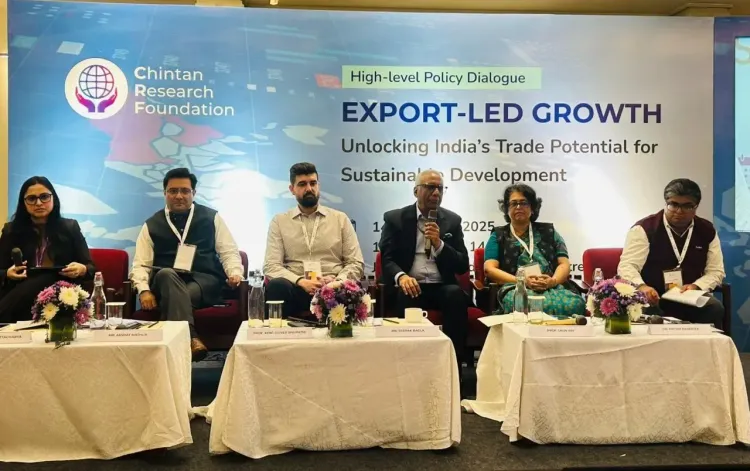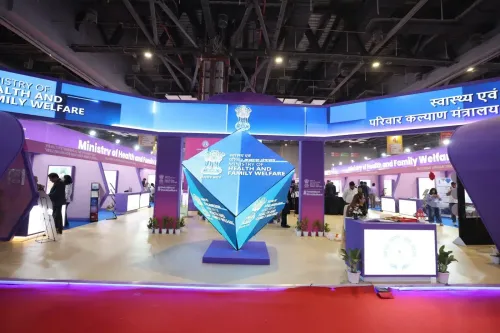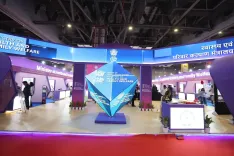Should India’s Export Strategy Focus on Quality Job Creation?

Synopsis
Key Takeaways
- Export strategy must focus on quality job creation.
- Environmental responsibility is essential.
- Inclusivity should be a core principle.
- Logistics efficiency is crucial for competitiveness.
- FTAs need effective implementation for benefits.
New Delhi, Nov 14 (NationPress) The export strategy of India needs to transcend mere volume growth to create high-quality employment opportunities, integrate environmental stewardship, and foster inclusivity, according to Shishir Priyadarshi, President of the Chintan Research Foundation (CRF), during an event on Friday.
He highlighted that the true measure of India's strategy will not be the speed of growth but rather the sustainability of that growth and the beneficiaries of it.
India achieved a historic milestone with total exports amounting to $824.9 billion in FY 2024–25, which included $387.5 billion from services exports, reflecting the nation's expanding trade prowess.
To maintain this momentum, a stronger emphasis on product diversification, value addition, and enhanced ease of doing business for exporters is essential.
“Moreover, India must realign its trade policies to ensure exports are the catalyst for sustainable and inclusive growth,” CRF stated.
Industry leaders present at the event emphasized that bolstering labour-intensive exports, enhancing logistics efficiency, and effectively utilizing Free Trade Agreements (FTAs) are vital for realizing India's long-term growth objectives and capturing a more significant slice of global value chains.
“Our focus should be on technology-driven productivity, which, when combined with skilled labor, can produce modern jewelry, positioning India as a global leader in jewelry manufacturing,” remarked Sabyasachi Ray, Executive Director of the Gem and Jewellery Export Promotion Council (GJEPC).
He also stressed the importance of fortifying India's labour-intensive sectors, including gems and jewelry, textiles, and apparel, which hold substantial employment potential and are crucial for inclusive growth.
Despite India having established several FTAs with key partners such as the UAE, Australia, and the EU, the actualization of their benefits relies on improved trade facilitation, logistics reform, and targeted support for exporters.
Accelerated policy implementation and optimized customs processes to minimize transaction costs are also pivotal for production. Modernizing logistics and ensuring capital efficiency are crucial for reducing export expenses and enhancing resilience.
India's logistics costs must align with those of competing nations, making the execution of the PM Gati Shakti program and the National Logistics Policy (NLP) vital.
Every percentage point saved in logistics can translate into billions for export competitiveness. Achieving competitive exports requires collaborative reforms in finance, infrastructure, education, and sustainability standards.
Deepak Bagla, Mission Director of the Atal Innovation Mission (NITI Aayog), highlighted the increasing intersection of innovation and trade.
“Today's export-driven growth is about exporting intelligence, not just goods. From services to semiconductors, India's future hinges on merging innovation with execution efficiency,” he pointed out.
The panel concluded that India's economic trajectory relies on transforming its domestic strengths into global advantages.









